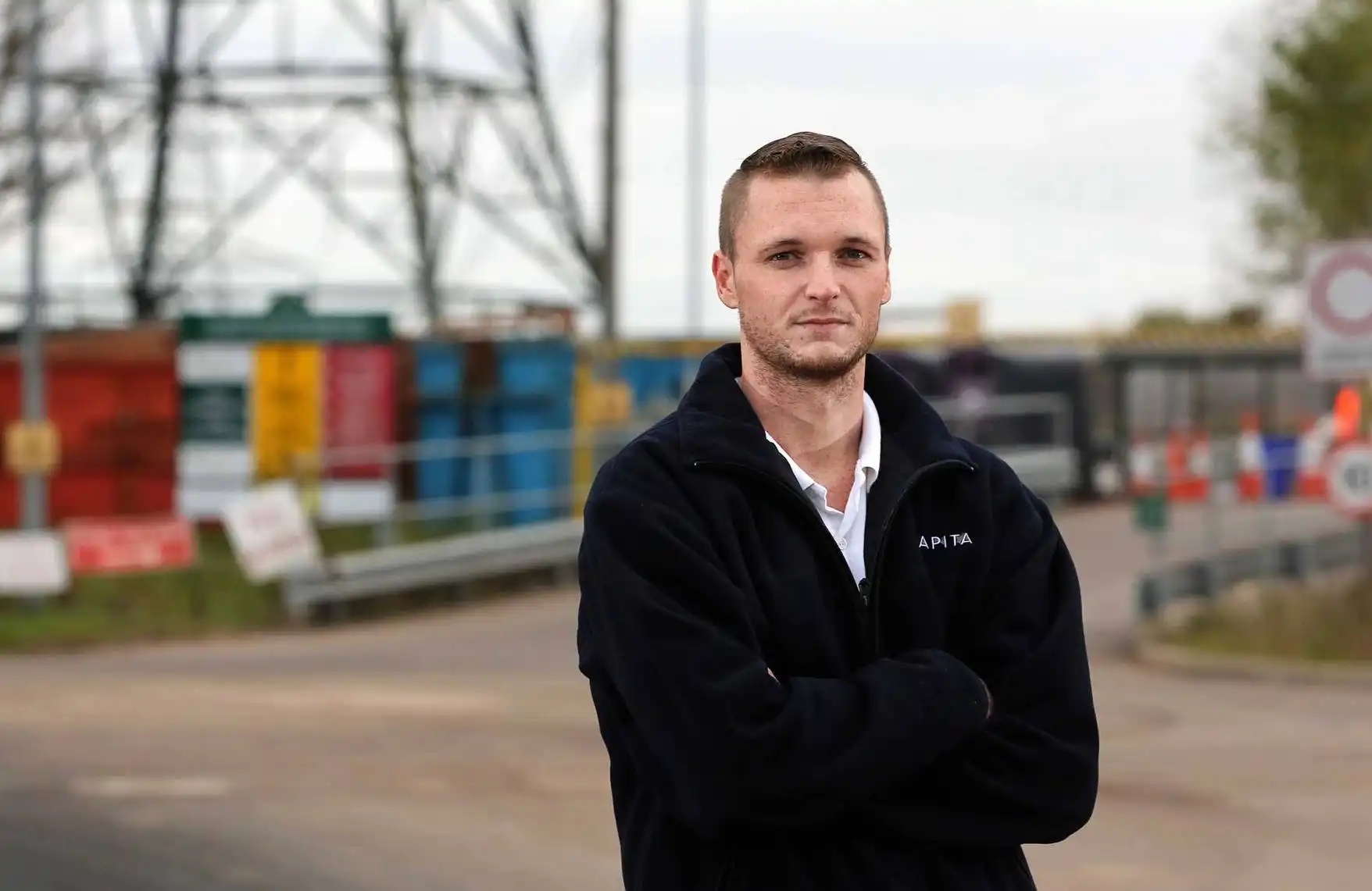The Lost 8000 Bitcoins That Haunt This Man's Life
Apart from the legendary story of 10,000 BTC being exchanged for two pizzas, few stories vividly demonstrate the immense value of cryptocurrency like the mishap of throwing away a hard drive containing 8,000 bitcoins.
This story of losing 8,000 bitcoins is retold every bull market, and this cycle is no exception. Over the 12 years from 2013 to today, the value of these 8,000 bitcoins has grown from $1.4 million to $1 billion, yet they remain buried in a landfill the size of 15 football fields.
The man who lost this fortune is named James Howells, an IT engineer from Newport, UK.

Recently, there have been rumors that he has given up the search, while some say he still holds onto hope. In fact, James has not only not given up but also plans to tokenize ownership of this BTC, issuing a new token and launching an ICO later this year.
The Summer Night the Hard Drive Was Lost
In August 2013, James and his partner Hafina lived in a typical terraced house in Newport, Wales, a seaside town known for its coal and steel port.
They had two young sons, and although the house was often filled with laughter, taking care of the children was not easy. James worked from home, handling the responsibilities of an engineer maintaining emergency response systems across communities in Wales during the day. He had to ensure that critical equipment like alarm lines and backup power were functioning flawlessly while also soothing the children to sleep—exhausting tasks to say the least.
To relieve his fatigue, he decided to take a short break to unwind, so he made plans with friends to spend a few days at a nearby beach. He even gave this trip a name—'The Lads' Holiday'.
On the eve of the departure, James began tidying up his cluttered study. "Drinking is a must for holidays, but I don't want to clean up the mess after a hangover." It was this sudden moment of inspiration that changed James's life.
Hafina walked in and started helping him pick up scattered engineering drawings, discarded ethernet cables, and various electronic components. The sea breeze wafted in through the partially open blinds, carrying a salty, humid aroma. As night fell, the children in the next room had already fallen into a deep slumber. James placed three or four bags filled with clutter by the door, and after finishing up, both of them lay on the bed, almost drifting off to sleep.
James hoped that Hafina would take out the trash on her way to drop the kids at daycare the next morning. However, Hafina refused, saying, "That's not my job; you do it yourself." Just before slipping into a dream, he suddenly thought of that hard drive.
Engineers have an almost instinctual sensitivity to data security: they are well aware that their hard drives often contain crucial information such as system configurations, logs, private keys, and more. Losing this data could lead to irrecoverable loss, so engineers don't casually throw away their hard drives. Consequently, as he is about to dispose of the hard drive, he silently reminds himself to take it out.
However, fatigue quickly overwhelms him, and he never gets around to removing that hard drive.

James's Lost Hard Drive
On the following day, Hafina wakes up early, unaware of the specific contents of the three or four bags. Despite this, she follows James's wishes from the night before and takes the trash to the landfill. Around 9 a.m., James wakes up, still groggy, and asks, "Did you take the bags to the landfill?" Hafina replies affirmatively. James thinks to himself, "Oh, fuck, she threw away the trash." Nevertheless, he is still drowsy and quickly falls back asleep.
10 Weeks of Mining, Receiving 8000 BTC
The discarded hard drive is the very item that James had been tirelessly searching for over the course of twelve years. Inside, there are the 8000 bitcoins James mined in his early years, now valued at 1 billion USD.
It was 2009, and Bitcoin was still in its conceptual validation stage, with only a few nodes on the network. James recollects, "I knew I was one of the rare five miners because when connecting to the network, the bottom right corner would show 'You are connected to x number of nodes'."
Influenced by his mother's work in a microchip factory since childhood, James started assembling computers at the age of 13, spent every day on the internet, engaged in various IT jobs as an adult, and was a proponent of neoliberalism. Following the 2008 financial crisis, James also viewed fiat currency as a "scam," held strong doubts regarding those in power, and naturally favored Bitcoin's vision.
On a forum, he first learned about Bitcoin. The Bitcoin system operated by connecting multiple computers to form a vast and secure network immediately appealed to him. This reminded him of two applications he admired: Napster (a rogue service for sharing music files) and SETI@home (a project that allowed users to combine computer power to search for extraterrestrial life).
So James used his Dell XPS laptop to download free software and mine Bitcoin, becoming an early adopter of the technology and earning some Bitcoin in the process. This led many to speculate that James may have had some interaction with Bitcoin's creator Satoshi Nakamoto, possibly even having Satoshi's IP address stored on his hard drive, which was considered more valuable than the 8000 BTC.

However, for James, the most significant wealth was still the 8000 Bitcoins. To prevent malicious actors from targeting him, during subsequent discussions, he intentionally blurred the numbers he shared: initially stating it was 4000, then later mentioning 7500, until only in recent years did he admit the true number was 8000 BTC.
At that time, he placed his laptop in the bedroom. The noise of the fan running during mining kept his partner Hafina awake, causing her irritation and multiple complaints.
Although he had no intention of spending the mined Bitcoin as it had no value at the time, and there was no reason to believe it would be valuable in the future, James initially mined Bitcoin just for fun; "it was just an experiment." Therefore, without any hesitation, he stopped mining. The 10 weeks of experimenting with this new cryptocurrency craze cost him approximately ten pounds in electricity to keep the computer running.
Shortly after, James accidentally spilled a glass of lemonade on his laptop. Despite his efforts to clean it, the laptop failed to work properly. He sold the parts, salvaged the hard drive, transferred all the photos and music to an Apple computer, but the one file containing the Bitcoin password was unable to be replicated due to incompatibility with the Apple operating system.
He tossed the hard drive into the kind of drawer we all have at home that we hardly ever touch, then, over the next three years, forgot about it, focusing on work and family life.
Then, on a summer night in 2013, as they were tidying up the room, saying "throw this away, look at that..." James and his partner Hafina casually dropped the hard drive into the nearby black garbage bag, along with a bunch of what he considered "useless" cables and mice. Hafina tossed it into the landfill, at a time when those 8000 BTC were worth around $1.4 million.
His Despair, as Vast as 15 Football Fields
The next day, while on vacation, the sunshine and the sound of the waves did not ease James's anxiety. His friends noticed that he would put down his glass before finishing his drink, his face dark with worry.
Feeling really down for no reason,
he confided in those around him.
Then, he stumbled upon a BBC report online: a 29-year-old Norwegian man had used the money from selling a thousand bitcoins to pay for a $400,000 apartment deposit. The article mentioned that at the time, these bitcoins were worth about $170,000. James realized: he had mined 8,000 coins, seven times more than the Norwegian. By the fall of 2013, the total value of these coins had exceeded $1.4 million, while his engineering salary was only a few tens of thousands of pounds, enduring 3 a.m. wake-ups to trek long distances to repair town emergency response systems.
His heart sank, James hurried back home, rushed to the study, and opened a drawer: inside was another hard drive, empty, not the one containing the private key and transaction records.
In a panic, he suddenly remembered that summer night a few months ago when he had thrown the hard drive with 8,000 bitcoins into a garbage bag himself.
He had wanted to rush to the landfill immediately but was afraid people wouldn't believe him: "Explaining bitcoin to others is not an easy task." So, for a month, he often quietly checked the market alone, watching bitcoin soar from a few dollars to hundreds, thousands, and then thousands of dollars—the value of his lost assets evaporating more and more absurdly.
Finally, when the value of this bitcoin soared from $1.4 million to around $6 million, James completely broke down, and he confessed everything to Hafina. Hafina was shocked to hear it but firmly encouraged him: "Go to the landfill, maybe there's still a chance."

Landfill view from above, image source Google Maps
So they went to the Newcastle landfill. To the landfill manager, he said, "I may have thrown away a hard drive with a bitcoin private key here, $6 million worth of trash."
The manager was silent for a moment, then led them to a higher ground, and James's heart sank.
He saw the full view of this landfill, piles of earth, trash, and waste stacked into a mountain, as big as fifteen football fields. The trash from three to four months ago should be three to five feet deep.
An employee who had worked at the landfill said, "People often come looking for things they accidentally threw away, sometimes within less than 24 hours. We always allow them a quick look at the landfill. When they see what's in front of them, their face turns dark. No one has ever recovered their items in this massive landfill, the probability is close to zero."
However, James also received some good news: the landfill was not haphazardly organized but had its own structure. The city had divided the landfill into different sections: asbestos was disposed of in one area, regular household waste in another. "Once a hard drive is buried in a specific cell, locating it is not entirely impossible, but it requires permission from the city government," he learned.
Upon returning home, James opened Google Maps and carefully measured the landfill's scope and zoning: "Space is limited, the amount of waste is large, but the accumulation is orderly; perhaps I can find it."
With hope and direction in mind, he promptly called the city's waste management department, leaving a voicemail requesting a search permit, but no one ever responded. Little did James, who was waiting for a call back, know that he would still not have that permit 12 years later.
Search became the main theme of his later life
From that day on, the search for Bitcoin became the main theme of his life.
He first submitted a formal application to the Newport City Council, pleading for permission to enter the landfill for a search. However, the council's response was repeatedly delayed: some questioned the environmental risks, some were concerned about public safety, and some thought it was just a "fool's errand."
Initially, Newport officials stated that if they found the hard drive, they would, of course, return it. However, they later took a tougher stance. How could Howells be sure that the hard drive had actually been thrown into the landfill? They warned that, in any case, the hard drive was likely to be unusable: it would be destroyed on its way to a toxic burial site. Moreover, the environmental risks of retrieving the hard drive were too high.
After studying the hard drive's structure, James countered: although the shell was metal, the internal disk was coated with anti-corrosive cobalt, possessing strong pressure resistance and anti-corrosion capabilities. He also cited the precedent of the recovery of data from the black box of the Space Shuttle Columbia in 2003 and invited Minneapolis-based data recovery company Ontrack to assess, with the company optimistically estimating that as long as the disk was intact, 99% of the data could be salvaged.
However, all this technical analysis was seen as mere talk by city officials. In 2017, the city government once again officially rejected his request to excavate the hard drive and cited a consultant's statement: "There does not seem to be any practical way to recover the hard drive." They even later took a tougher stance, stating that searching for the hard drive was illegal.

As the value of Bitcoin continued to rise, James's obsession with finding the hard drive deepened, even considering suing the city government, a common move in the United States but rare in the UK.
By early 2018, James had already "buried" over $1 billion worth of Bitcoin in the landfill, but the council was still not budging.
Unwilling to accept defeat, James had no choice but to hire a legal team and file for judicial review against the city council in the High Court, seeking an on-site search warrant. In court, he proposed to donate 25% of the proceeds from the hard drive recovery (then around £2 billion) to over three hundred thousand residents of Newport, with each person receiving an average of £175; at the same time, he envisioned turning Newport into the UK's first "cryptocurrency hub," establishing blockchain education and crypto payment points.
"If the hard drive is not found or damaged beyond data recovery, then who will bear the cost?" the city council countered.
In 2022, James's team once again upgraded the plan, intending to introduce AI robotic arms to identify trash, drones and Boston Dynamics' "robot dogs" to ensure security, and recruit full-time environmental and data recovery experts, with the overall budget increasing to £10-11 million. Meanwhile, some venture capitalists expressed willingness to cover this budget, but with a fifty-fifty split of the recovered Bitcoin.
The latest news is that he spoke at the 2025 Bitcoin conference, stating his intention to purchase the land where that landfill is located.
The Lost Bitcoin That Completely Altered His Life Trajectory
James's pursuit has been ongoing, and he has paid a steep price for it.
Since the summer of 2013 when Bitcoin's price fluctuated between $50 and $266, he spent a full 11 years entangled with the Newport City Council and the courts—conservatively estimated, legal fees alone exceeded $100,000. Some mocked: "He should have spent the money on Bitcoin instead of legal fees." Indeed, if he had invested those legal fees directly into the market back then, he would be a billionaire today.
Looking at it from another perspective, James once raised $5 million in an attempt to buy the entire landfill. From an opportunity cost standpoint, this investment seems even more absurd: if in the year of the lost hard drive in 2013, he had raised $5 million not to buy that landfill but to acquire BTC at an average price of $192, he would have amassed about 26,500 coins; now, the market value of these 26,500 coins has reached $2.78 billion, more than 3.5 times the initial loss.
And under the most extreme assumption, if since that time James had been investing $100 a month, nine years later, he would also have accumulated 10 BTC, enough to sustain his expenses in the latter half of his life without depleting everything.
James also tried to restart mining a few years ago, using a set of ten S9 processors—powerful processors that he ran non-stop for a year and a half. However, the economic environment of Bitcoin mining has changed too much, and he felt that mining was no longer worthwhile: the cost of electricity exceeded the value of the Bitcoin he was mining. This adventure turned out to be another failure for him.
Ultimately, he "messed up" three times on the path of recovery: once by losing the hard drive, once by wasting the recovered funds on costly lawsuits and schemes, and once by deciding to give up on restarting mining.
But the biggest failure was yet to come. For James, the loss of 8000 BTC was his greatest distress, as it completely altered the trajectory of his life.
After the split, James and Hafina never spoke again
During the first few years of searching for Bitcoin, James' partner, Hafina, was also deeply troubled.
Strangers, media reports, and friends constantly tagged and commented on her online, evaluating their shared experience of losing 8000 Bitcoin, especially since it was she who threw away the garbage bag containing the hard drive.
"This wasn't my fault," Hafina had grown tired of explaining everything and weary of the story of the wealth lost: "He begged me to take the trash away, and I just did as he asked." "I really hope he finds it because it will finally shut him up."
As a mother of two, Hafina shared her conflicting feelings: "On one hand, I feel like the city should allow him to mine the landfill, let him try to find that wealth he's been dreaming about; it would be good for his mental health. But on the other hand, I feel like he's better off letting go, moving on."

Hafina, Image Source: Internet
James later admitted this: "I try not to blame her in public or in my daily life, but deep down, I know I still do."
So they ended up divorcing, with Hafina taking the two children, leaving the townhouse, and only leaving behind the children's pet dog, Ruby. The sheets on the children's bunk bed are crumpled, emitting a musty smell, the wallpaper is peeling, and dust is everywhere in the room.
Hafina said that the reason for ending the relationship was not Bitcoin, but other reasons. The loss of Bitcoin itself never bothered Hafina: "It's not tangible. Money has never been that important to me." "No matter how much the Bitcoin he eventually recovered is worth, I have no right to claim. Although he is the father of my two sons, I don't want a penny."
After that, James's life was completely thrown off balance. He lost his drive for work, was unwilling to look at the Bitcoin price for a while, and deliberately avoided the road to the landfill. He admitted, "Every day sitting in front of the console, I couldn't concentrate. The memories of that wasted money overwhelmed me."
Over a decade later, his children are now busy with other things and rarely visit him. He also tried other intimate relationships after Hafina, but the trauma stayed with him.
James sometimes also imagines that in a parallel world, his other self is living a different life: for example, he is still with Hafina, married, taking care of the family, following the original trajectory. The year they got together, James was 20 and Hafina was 22, they were supposed to have a happy life. And if he hadn't lost those Bitcoins, they might still be living on a yacht.
The Decade-Long Peddling of This Story
And James has become paranoid and extreme because of this incident. He deliberately blurred the amount of Bitcoin he revealed to the public several times: he initially said it was 4000, then 7500, until in recent years he admitted that the actual number was 8000 coins, to confuse potential "thieves."
When the media or other partners asked him to verify more details, he always refused because he was worried that the information would be leaked to competitors of the mining team now, attracting some "tomb raiders."
People around James who have come into contact with him often find him evasive and overly defensive. Once, a friend asked him about his thoughts on the new coronavirus vaccine that was still in development. He replied, "One thing I've learned from the IT world is... never try the first version." When the GameStop stock was squeezed in 2021, James said it was a completely manipulated game.
And more voices are saying that James has excessively peddled his own story.
The Los Angeles-based LEBUL production company has been authorized to bring his life to the screen, titled "Buried Bitcoin: James's True Treasure Hunt," set to premiere by the end of 2025. His story will be presented with a large amount of CGI effects showcasing a "high-tech treasure hunt" scene.

“This is his tenth time selling his story and making it to the newspaper,” a netizen said. For him, media exposure is both self-consolation and the last resort to maintain hope. Every time during the documentary filming stage, he would spontaneously release new progress: claiming to have almost located the hard drive or to have initiated a new AI robotic arm screening solution. In order to keep onlookers engaged, perhaps he could even raise the next round of “search funds.”
Just recently, James came up with a radical idea again: he plans to issue a token called Ceiniog Coin (INI), with a total supply of 80 billion, targeting a launch by the end of the year. Each INI will be embedded with OP_RETURN data from the Bitcoin network, integrated with protocols such as Stacks, Runes, and Ordinals, anchoring the value of that lost 8,000 BTC’s “1 satoshi.” He claims that holders can expect to share dividends from any future hard drive recovery or monetization of assets.
All of this sounds both imaginative and absurd.
Due to the dramatic nature of the story, many people suspect it is a fabricated lie from start to finish. After all, in the UK, you can get paid £250 for selling any of your small stories to a tabloid, let alone such a dramatic story that can be told consistently for ten years. However, the author does not think so because in this story, I see many details that are well-known to lack in lies.
James's favorite movies in the past were “Fight Club” and “The Matrix”—for a person enthusiastic about a technological utopia, these two films embody his worldview.
Now, he more often mentions “Final Destination”: in the film, even a loose screw or a faulty pool drain can trigger a catastrophic chain reaction. He says this is a reflection of himself—a seemingly insignificant hard drive that has shaken his entire world.
On that summer night in 2013 when he lost the hard drive, James Howells' life was forever trapped in that day.
Welcome to join the official BlockBeats community:
Telegram Subscription Group: https://t.me/theblockbeats
Telegram Discussion Group: https://t.me/BlockBeats_App
Official Twitter Account: https://twitter.com/BlockBeatsAsia
 Forum
Forum

 Finance
Finance
 Specials
Specials
 On-chain Eco
On-chain Eco
 Entry
Entry
 Podcasts
Podcasts
 Activities
Activities
 OPRR
OPRR










